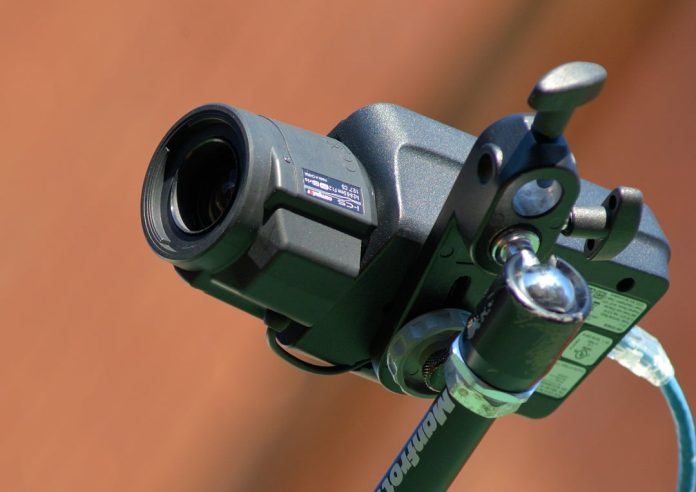Axis Q1615 Mk II offers up to 50/60 fps in HDTV 1080p and up to 100/120 fps in HDTV 720p, and is equipped with an i-CS lens, enabling the camera to adjust zoom and focus during remote setup for quick installation and tweaking. There’s Lightfinder technology and WDR – Forensic Capture, Electronic Image Stabilization and much more.
AXIS Q1615 Mark II with i-CS lens arrived at the SEN office the other day and about 10 minutes later it was up and running as I tried to work out whether or not the partnership between Axis and lens maker Computar lives up to the hype. Actually, it does. The Q1615 was good anyway and the Computar 2.8-8.5mm i-CS lens; which communicates data about baseline lens geometrical distortion and the exact position of its zoom, focus and iris opening; takes the camera’s capabilities to a higher level. This camera’s distortion correction allows the use of very wide angles of view without any of the distracting hobbit hole effect you always see at 2.8mm, encouraging exploration of the short end of the focal length to meet the operational requirements of larger spaces.
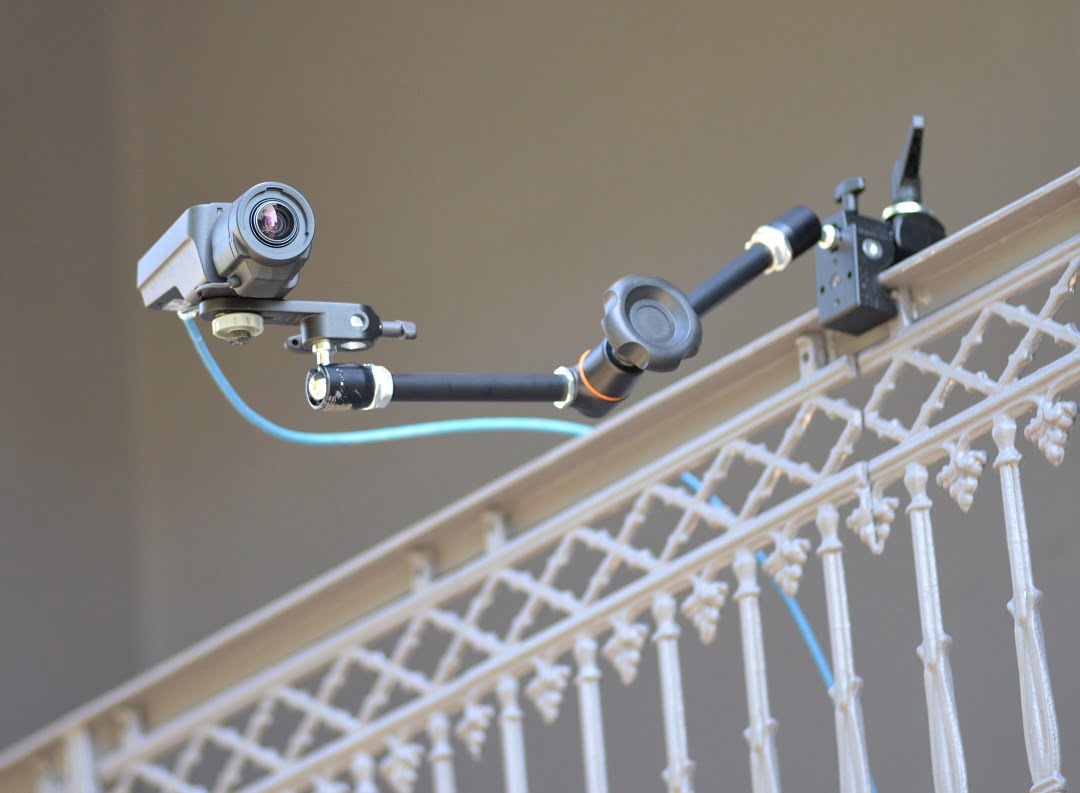
The camera has a progressive scan RGB CMOS 1/2.8-inch sensor, a varifocal, IR corrected, CS-mount 2.8–8.5 mm lens with a fast aperture of F1.2. Angle of view depends on resolution selected. At 1080p it’s 115-39 degrees horizontal and 61–22 degrees vertical (it’s 74–26 degrees in the horizontal plane and 41–15 degrees vertical at 720p). In this test I keep the camera at 1080p and 30ips and all the specs we quote from here out reflect that setting.
There’s an auto infrared-cut filter and minimum illumination in colour is 0.11 lux and 0.02 lux in monochrome, at 50 IRE and F1.2. Shutter speed is selectable from 1/143000 to 2 seconds – we stay in default auto. Compression options include H.264 (MPEG-4 Part 10/AVC), Main, Baseline and High Profile, and Motion JPEG. There are multiple configurable streams and you can twiddle with frame rate and bandwidth. The camera offers Zipstream and I leave it in the lowest (least compressive) setting.
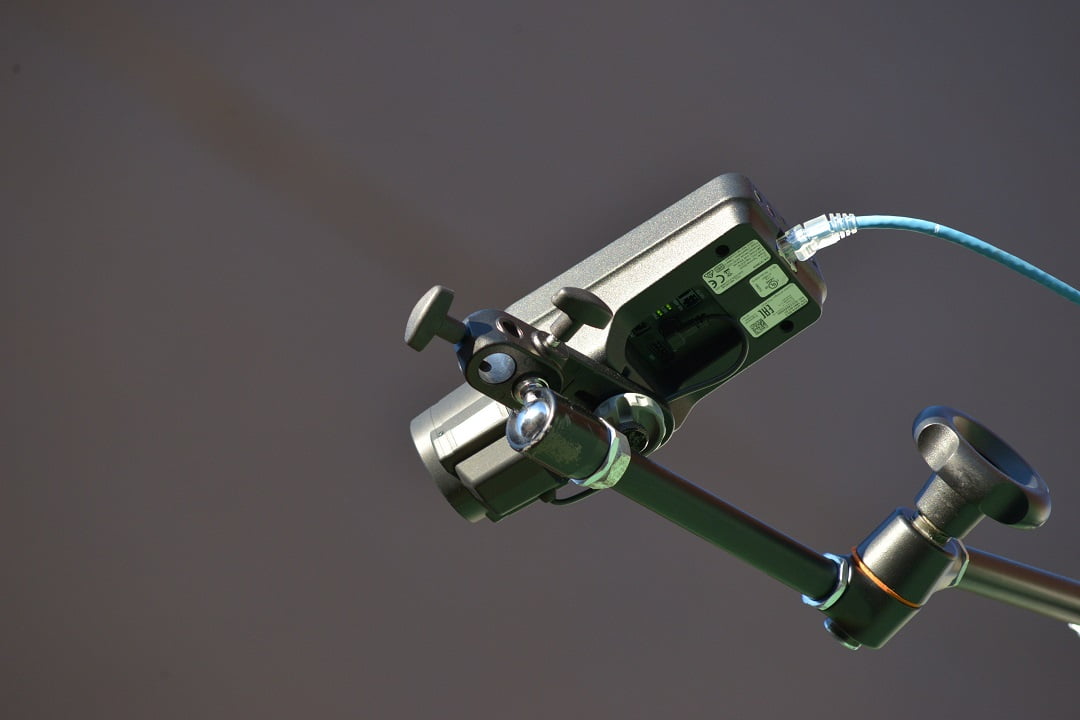
Other image settings include colour, brightness, sharpness, contrast, white balance, exposure control, exposure zone, fine tuning of behaviour in low light, text and image overlay, privacy mask, mirroring of images, and rotation options include auto, 0, 90, 180 and 270 degrees, including Corridor Format. I leave the camera settings in default and tweak text settings. WDR forensic capture is up to 120 dB depending on scene and I leave this in auto.
Barrel distortion correction I turn on and off for academic purposes – it’s a very worthwhile feature, particularly given the relatively strong barrel distortion of the lens – it’s about 9 or 10 per cent towards the edges with distortion settings off – zero with correction on. I leave day/night shift level at default, electronic image stabilization on and leave local contrast and defogging off. Scene profile options in include forensic profile, live profile and traffic overview and I choose live profile.
The camera has 2-way audio, which I leave on. There’s an open API for software integration, ONVIF Profile S, analytics via Axis VMD 3, active tampering alarm, audio detection and support for Axis camera application platform enabling installation of cross line detection, digital auto-tracking and third-party applications. There are also event trigger analytics, edge storage events, external input, shock detection, Day/Night mode, Live Stream Access, Network, Temperature, Manual Trigger, Virtual Inputs, PTZ Control, System Ready, and schedules. Event actions can upload files to FTP, SFTP, HTTP, HTTPS, network share and email or a video clip can be sent via email, HTTP, HTTPS and TCP. There’s video and audio recording to edge storage, pre and post-alarm video buffering, external output activation, day/night vision mode, play audio clip, status LED, WDR mode, defog Mode, PTZ control, and data streaming of event data.
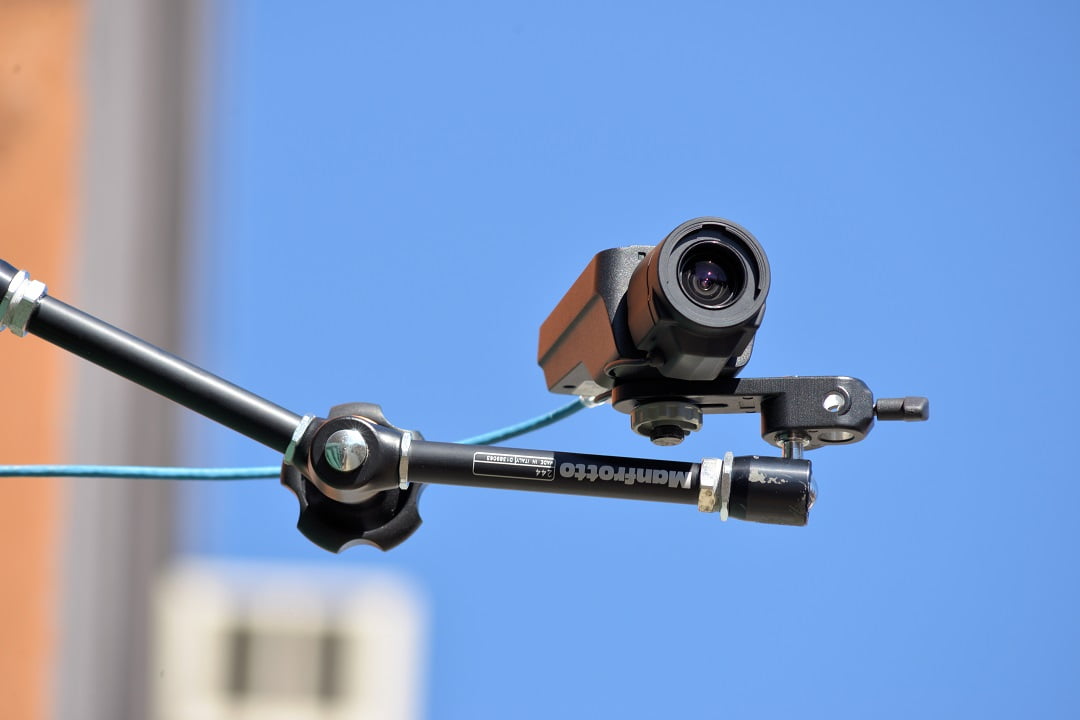
Nikon 300mm AIS, what a beautiful lens you are…
PoE is Type 1 Class 3 with a typical draw of 4.4W and there’s also 8-28 V DC, with a typical 4.3W. There’s a terminal block for 2 configurable inputs/outputs, there’s a 12V DC output with a maximum load of 50mA, as well as a DC input. You also get RS485/RS422 for data comms. Local storage is microSD, microSDHC and microSDXC card. Operating range is between 0-55C unhoused and up to 60C in the T92E20 housing. Dimensions of the camera and lens are 82 x 58 x 136mm and weight is 750g. The camera feels good in the hands – it’s well made in every visible respect.
Test driving the Q1615 Mark II
In the first part of the test, I set up off the front balcony looking up Bellevue Street from shadow into 75,000 lux of sunny side sun. We are running this camera with a NetGear ProSafe GS108P PoE switch on our dedicated Dell Optiplex 9020 i7 server via the Axis camera browser. It’s an easy interface and we’re very familiar with it, having no problems at any time with management of the camera. Latency is low – maybe 250th of a second for video and audio.
As soon as I set up I’m impressed. In terms of overall capabilities, backlight performance is a strength, there are high levels of detail, good work with plates, excellent work with faces, good colour rendition and exceptional work with WDR. There’s a little bit of stepping with this camera, it’s very windy and there are trees in the scene, so it’s not unexpected. The colour rendition is great and there’s very strong detail and great contrast. Excellent WDR performance. I get some rainbow lens flare in direct light but generally and no matter what I do, performance in and out of shadow is very uniform. Colour rendition is very natural. There’s some CAs but they are at acceptable levels.
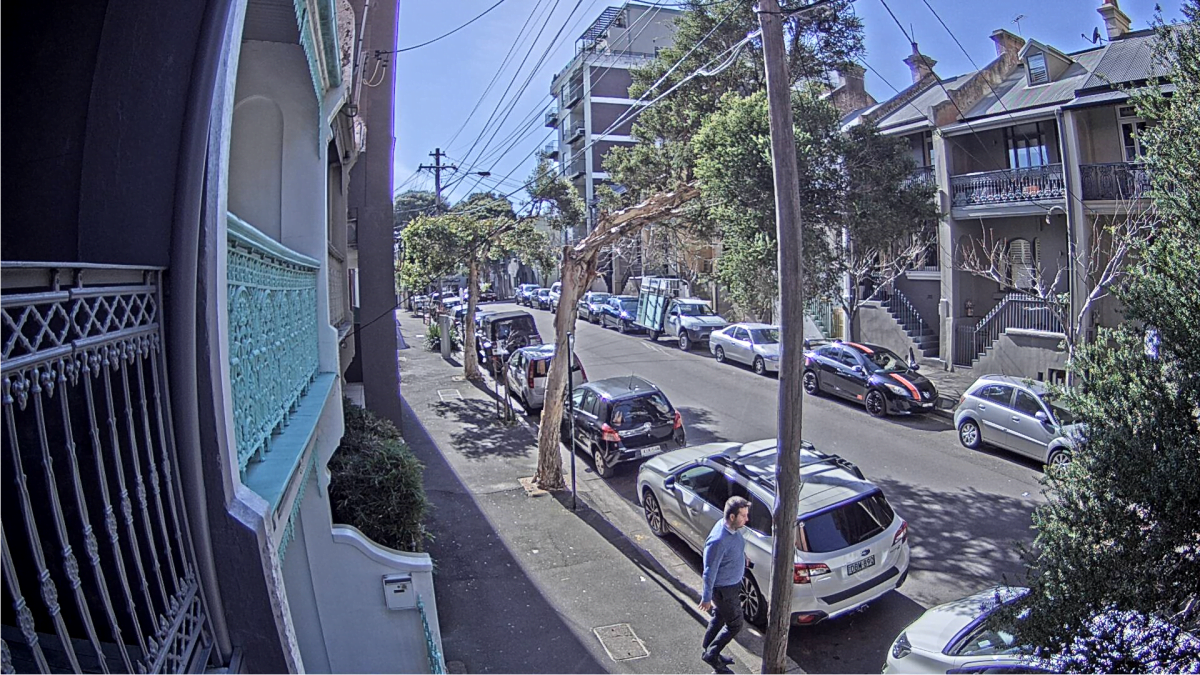
Distortion correction off…
Depth of field is a real strength. The wide end is very accommodating for street work. Very pleasing performance. The audio is good, too. We take a delivery during the test and the delivery team hurt themselves lifting something heavy and I get the full conversation. While I easily get faces out to 12m, I have less luck with plates. There are no strong signs of motion blur in this good light – it’s just that when I zoom in digitally on a 6mm image there’s a point I lose resolution completely – that point is before I can resolve the plates at 20m. Would the camera do better with plates at 8.5mm full tele – yep, definitely.
But the big thing here is barrel distortion at the wide end of the iCS lens. When I power the camera up and take a look I can’t believe there’s none to be seen and its only when I hop into setup that I see the camera has been set to distortion correction. I flip it on and off – big difference. Maybe 8-9 per cent off and zero with DC activated. Great feature and same as every other piece of neat Axis tech, it’s likely to filter down to lower end cameras over time.
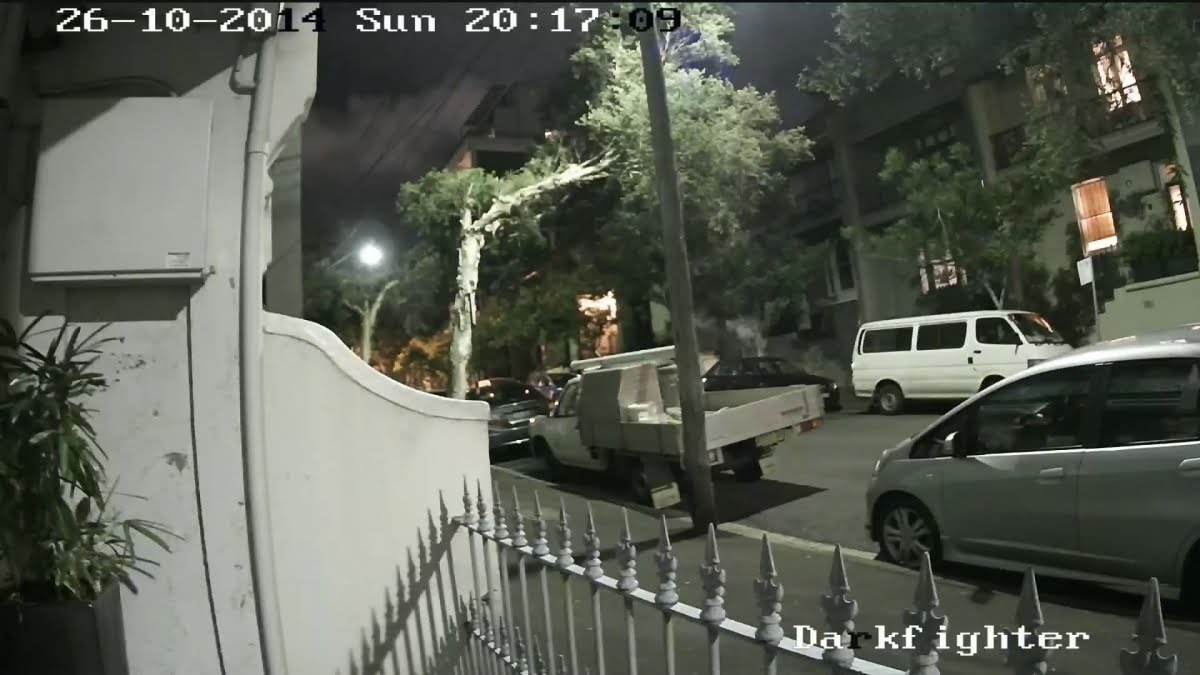
Distortion correction on…
The camera has a 2.8 to 8.5 motorised varifocal lens with a quick autofocus and as usual, I move the focal length a lot, looking for the optimum angle of view giving the most detail and the least static elements. I’m never quite satisfied with my focal length but I find I’m happiest towards the long end – about 6mm, I think. Sometimes with back lanes a corridor format might make sense. Fully 60 per cent of my scene is brick and block wall and fences, which is an awful waste of pixels, I think.
Performance at about 5mm out front in good light is strong. Colour rendition is great, there's excellent sharpness, depth of field, light balance thanks to careful management of WDR, no CAs at this focal length. Face recognition is beautiful. The images tell the story.
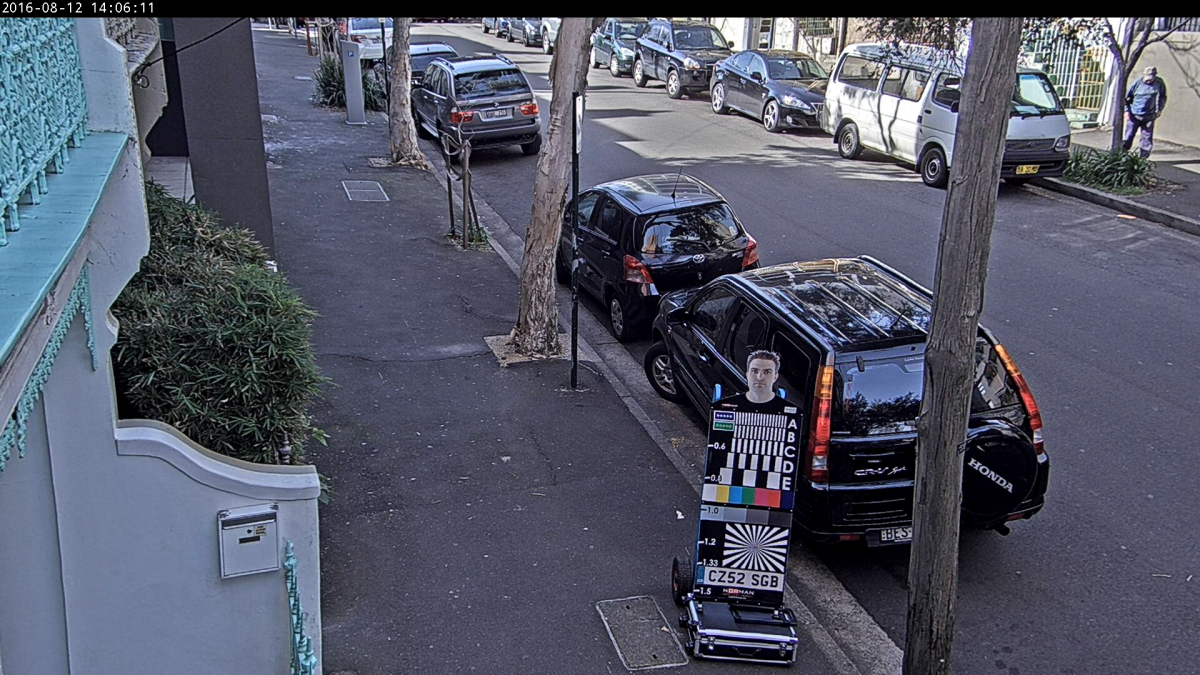
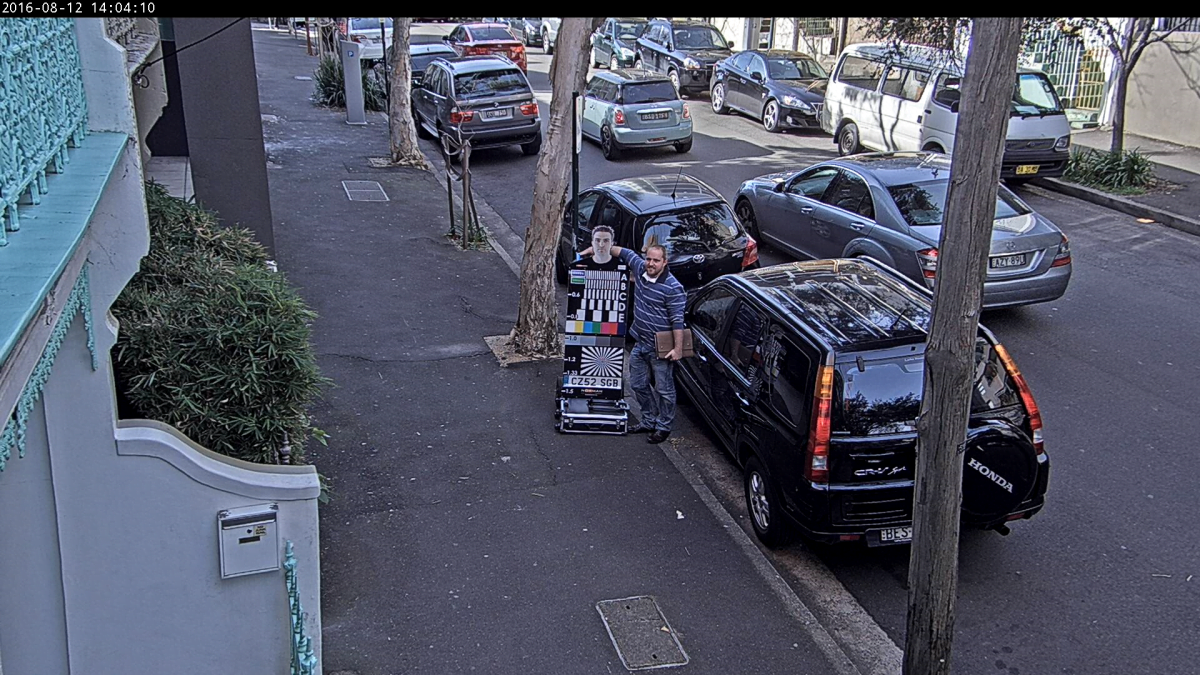
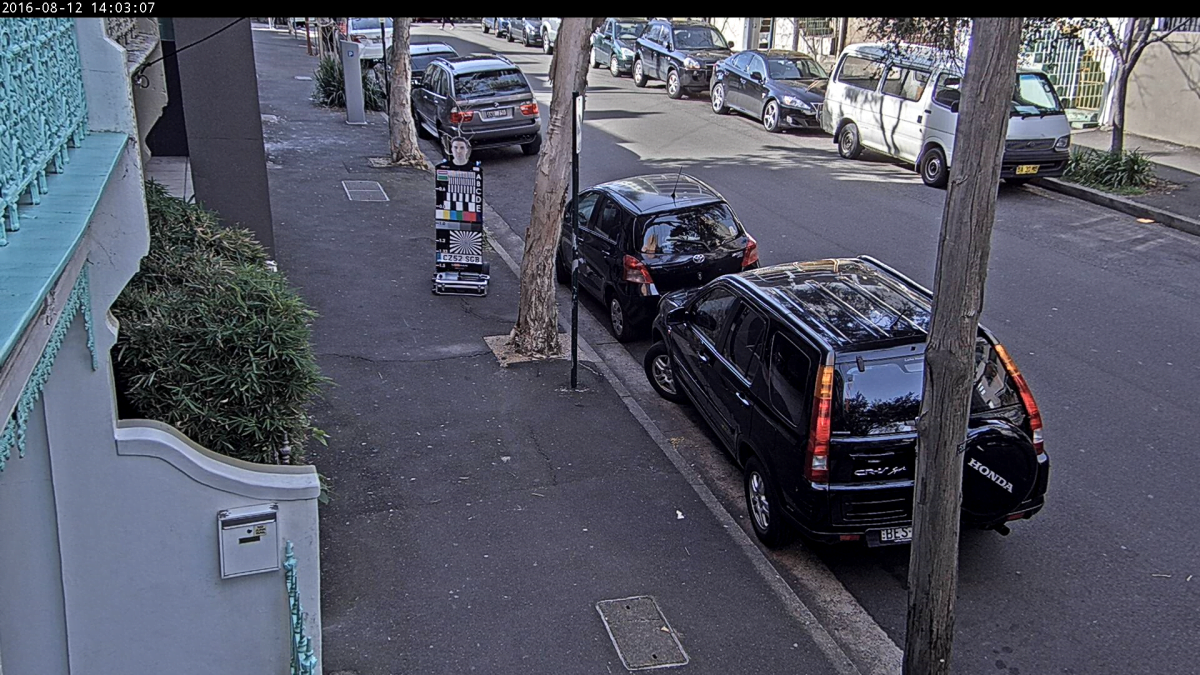
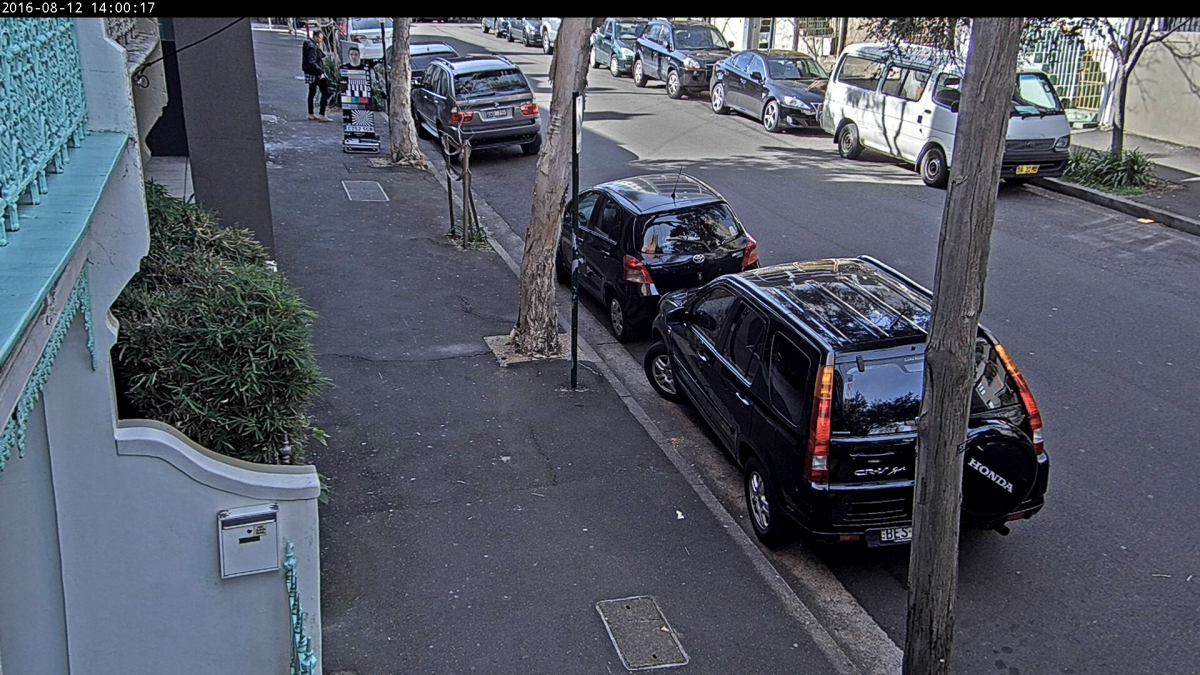
Face and plate recognition at 5mm is strong – note the seamless dark into light transitions. That's CARS founder Gordon Donald's son Heath helping Norman show quality court admissible faces at 12m in image 2.
If I have any grumble with the lens it’s the presence of longitudinal and latitudinal chromatic aberrations throughout scenes at the shortest focal length of 2.8mm. These disappear at longer focal lengths of 4.5mm so they can’t be related to tone mapping – there must be some tolerance in the lens leading to a variation of wavelength focal points at the wide end. Wide fast lenses do suffer from CAs but at 8 pixels deep, these impact on digital zoom and overall image sharpness. They aren’t the end of the world by any means but they are something to take into account during commissioning.
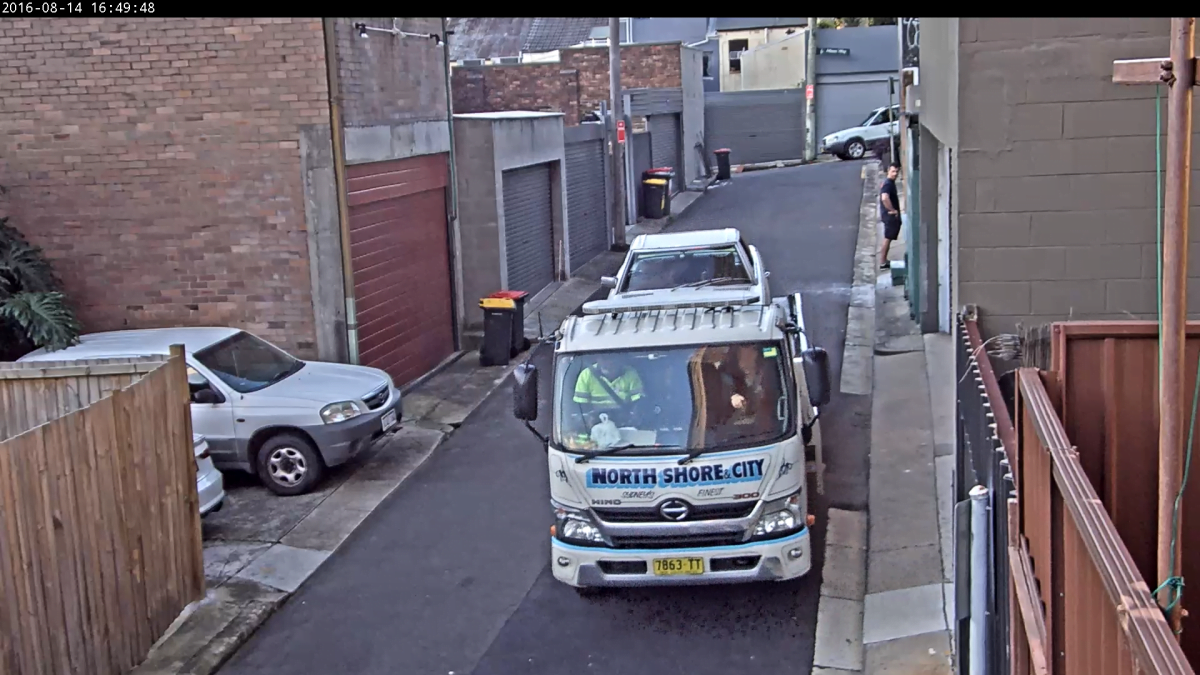
As the afternoon goes along, I move the camera to the lane and performance stays very balanced and seamless. There’s some processing swim in the images – it increases around 4pm and continues to increase – at 4.37, it’s evident as a little smudging and loss of detail in adjacent brick walls. At 5.01pm things are stable. There’s no direct sunlight on the lane. I toss up whether to tweak the camera for blur at the cost of noise. I leave noise in the centre and blur towards full. At 5.10 I pull out to full wide, giving me full aperture and letting me appreciate the total lack of barrel distortion. It’s a lovely composite image. I note some CAs on the edges of poles and buildings but it’s nothing to agonise over. Same as all IP cameras, this one pulses a little with noise and digital artefacts as the image is refreshed – it does so every 3 seconds, which in a static image is a very slow rate.
Night Performance
Performance is very linear with this camera – between 5 (500 lux) and 527 (100 lux) it stays almost unaltered. It’s impressive. There’s probably some more noise but I can’t readily see it. The next half hour will be interesting… At 17.33 the image gets cooler as light start falling more quickly. Noise levels remain low. At 1741 it’s 3.8 EV – about 32 lux – and the image is beginning to get noisier. I’ve now lost quite a lot of detail from the besser block wall of the tower across and there’s considerable swim on colourbond fence. We are still in colour. Control of blooming is very good indeed – this lens – it’s a Computar – is making lovely 4-pointed aperture stars.
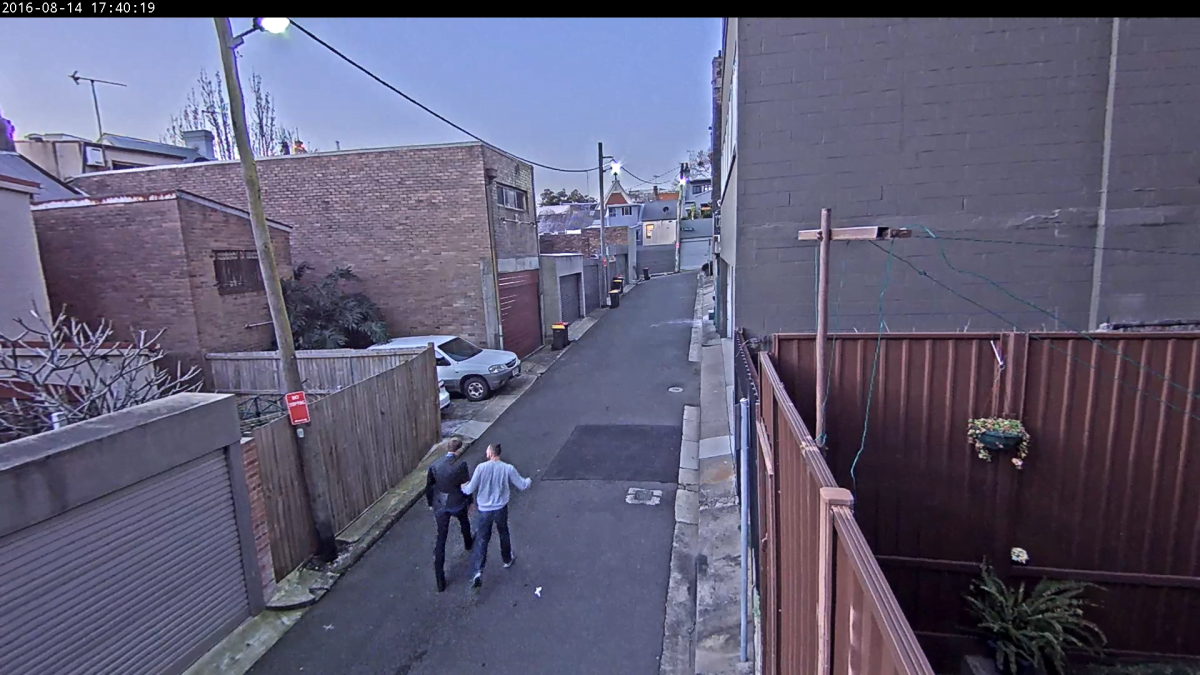
CAs on high contrast points and mild moustache distortion alongside great control of blooming, excellent face recognition and depth of field at full wide.
At 5.46 I hop into setup and pull the noise/blur slider to the centre. That does make a difference. I’ve seen before with Axis cameras that this slider really does have a functional impact but it should be reasonably balanced in the centre. At 1750 I get an interesting double flare ring with a central sphere in the lens. Light levels are 0.6EV – at the lens – that’s about 4 lux. The image is good. Very good for this level of light. The very fast F1.2 Computar i-CS lens combines with the camera to blitz backlight, delivering lovely 4-pointed aperture stars on bright points with virtually no blooming.
Given the strength of the performance out front the night before where I had to push the camera into night mode, I should have expected this level of capability but it’s still impressive. There’s no foot traffic out here but I would expect face recognition to 12m and there’s very strong detail all the way to Albion lane 70m away. It’s very pleasing performance. The lane has patches of bright and dark but this camera handles them well.
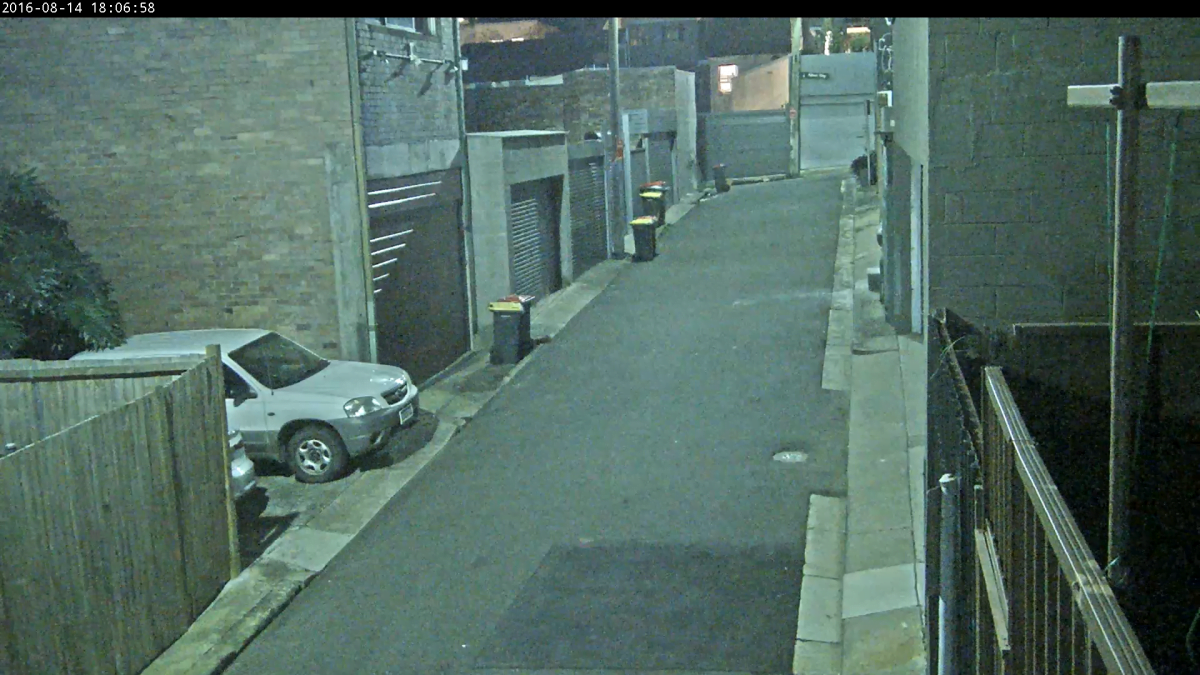
Here we are at about 5mm with 2 Lux at the lens in colour. Yes, there's some noise but overall it's a very strong image. The Q1615 is melting dark spots away.
At 6pm, light levels are under 2 lux at the lens. There’s quite a bit of noise in surrounding walls where light levels are very low and the camera is in effect amplifying that part of the scene into existence but we are still in colour. The image is stable and overall, low light performance is great.
At all times, the camera clings to colour like a terrier. When pushed into low light mode it offers useful image streams at sub-2 lux and excellent crisp contrast in the presence of IR. There’s not much change to image quality outside of loss of colour when moving from day to night mode – often an image noticeably improves but the Q1615 is doing well in colour in this application, though there’s some noise in surrounding walls.
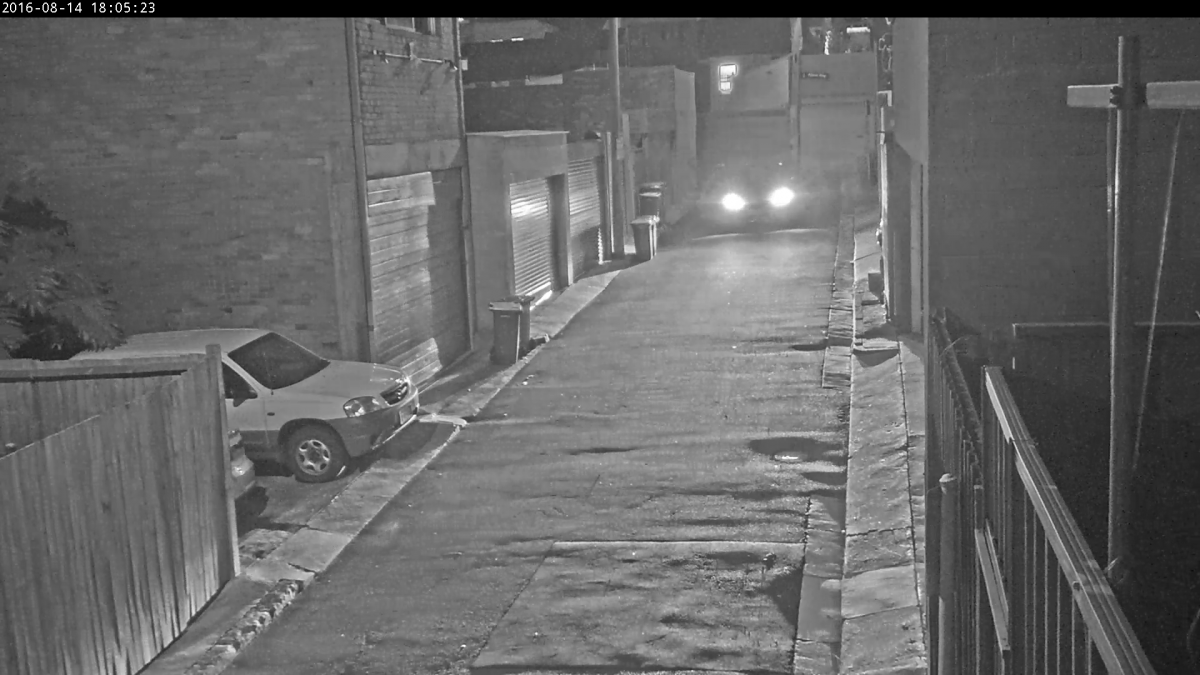
Control of blooming is exceptional…
When I zoom to about 5mm this is reduced considerably and I get fine detail back. A car comes down the lane allowing me to confirm that the camera is very resistant to blooming – it’s one of the surest sign of a quality sensor, I think. I switch back to colour. Performance is still very strong. Noise in dark areas but overall good performance.
Ok – time to come into the backyard with no streetlight assistance. Here, low light performance is also very strong – the camera has gone to monochrome by itself this time. I’m very surprised how well it’s doing here – it’s fine work from Axis and I rate it the best I’ve seen in this sub 2 lux application. This is the best view I’ve had of the test chart unassisted in the courtyard.
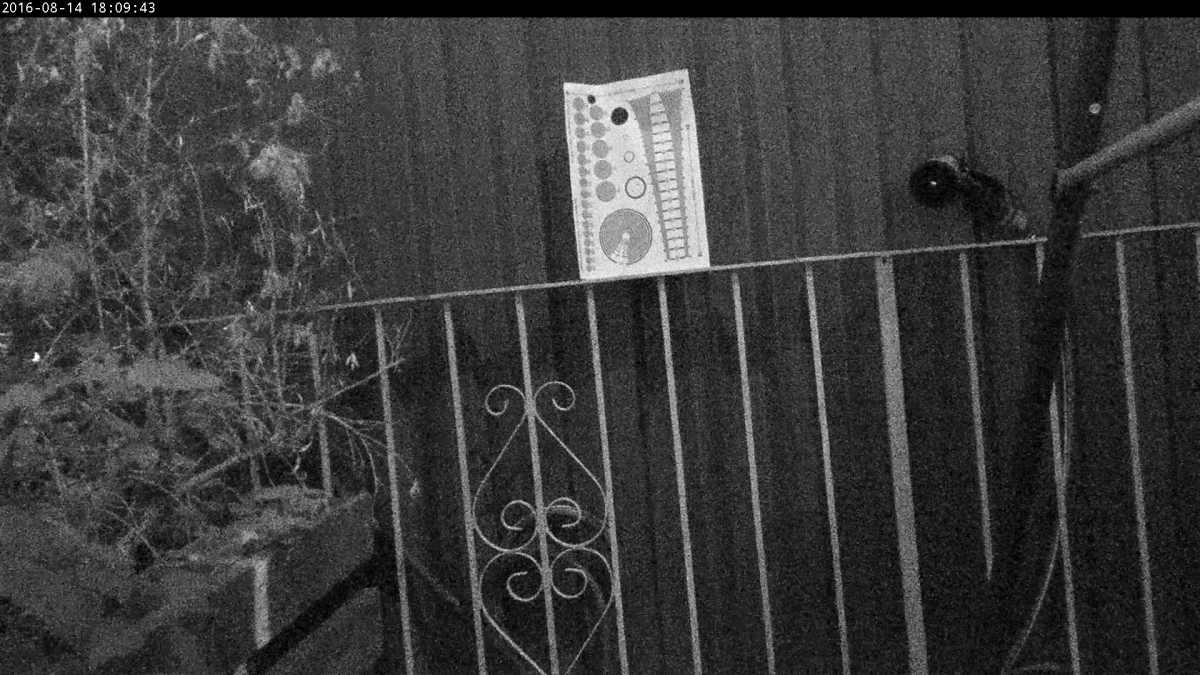
This is in night mode with zero lux at the lens…
When I take the camera into the office I find performance is good in the office with only 2 screens on. Again, I have to push the camera into monochrome. IR performance is good – very crisp and contrasty. If there’s a limitation here it’s the power of the IR array, which I’ve seconded from an adjacent D-Link dome and which is starting to drop off at 10m from the lens. The Q1615 would do better with a dedicated offset Raytec IR unit.
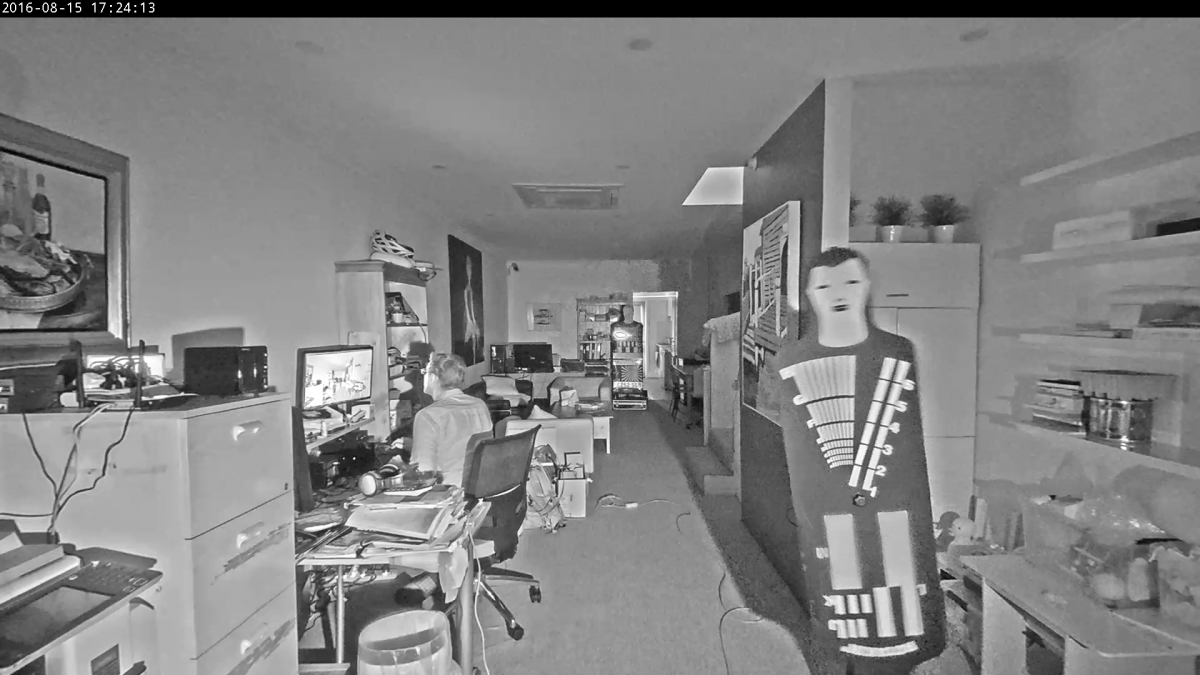
Here is IR performance at full wide leveraging the IR array in a D-Link mini dome. Very impressive.
Out the front of the office, I find motion blur is moderate at balanced camera settings. I'm not getting plates and there's the same characterisitic noise I saw in thje back lane but generally speaking, it's a strong series of images, with face recognition close to 20m and excellent depth of field and colour rendition. The camera is contriving through just enough amplification digital processing, to give extremely balanced light levels in dark and shaded areas – it's good work. Ronnie Rotakin shows about 45-degrees of blur at 25rpm but I’m definitely getting court admissible faces from moving pedestrians.
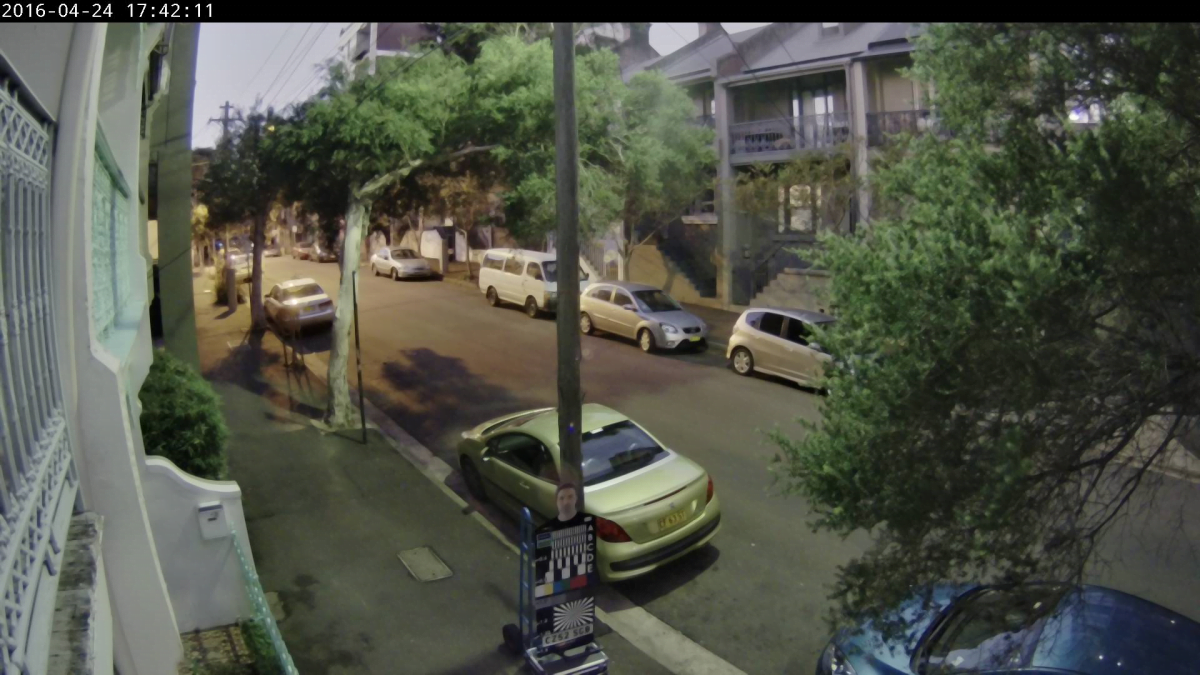
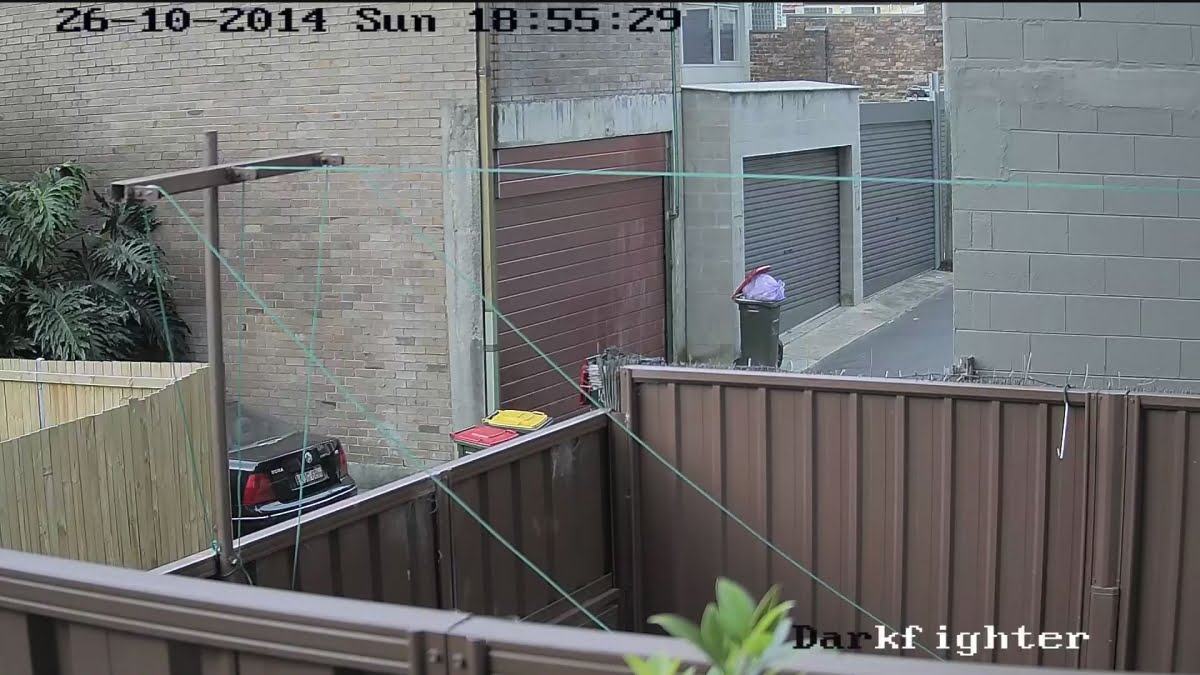
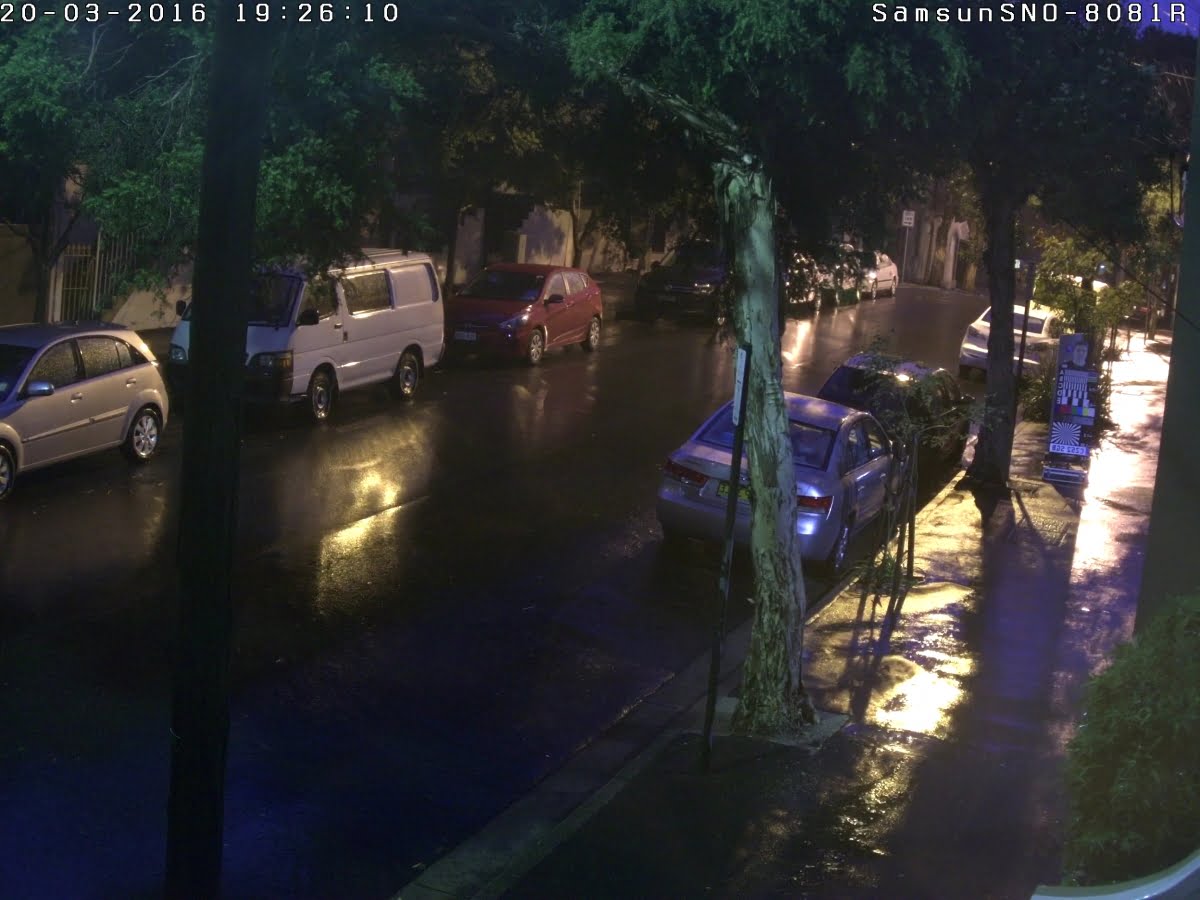
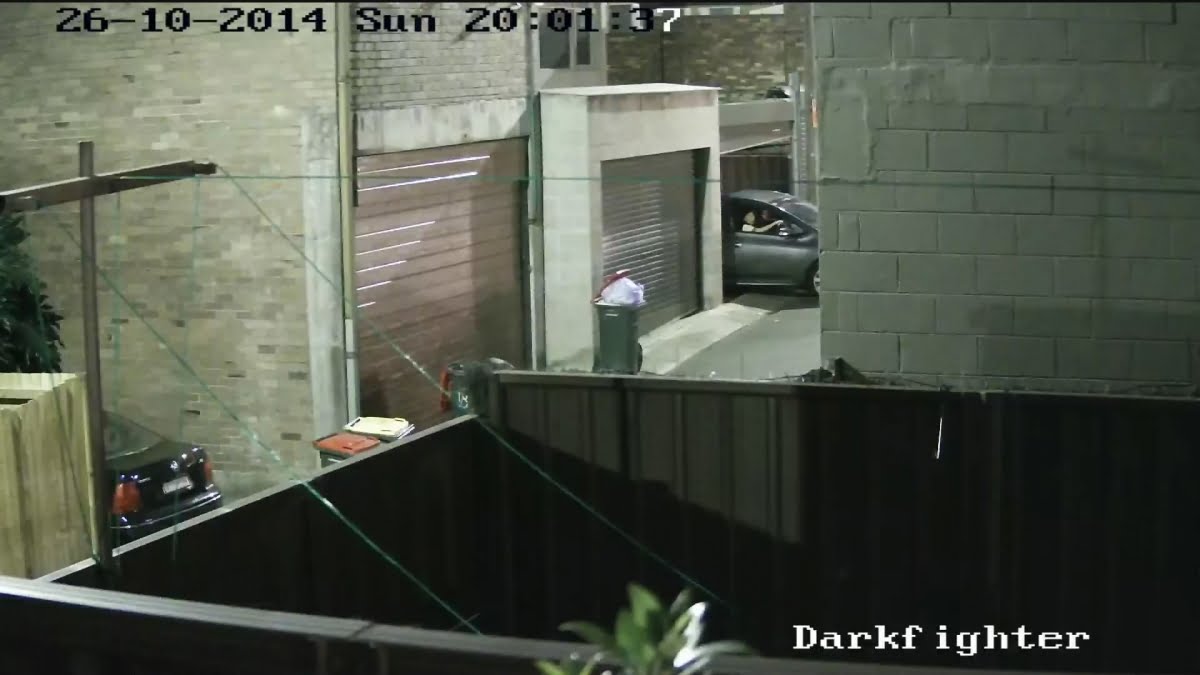
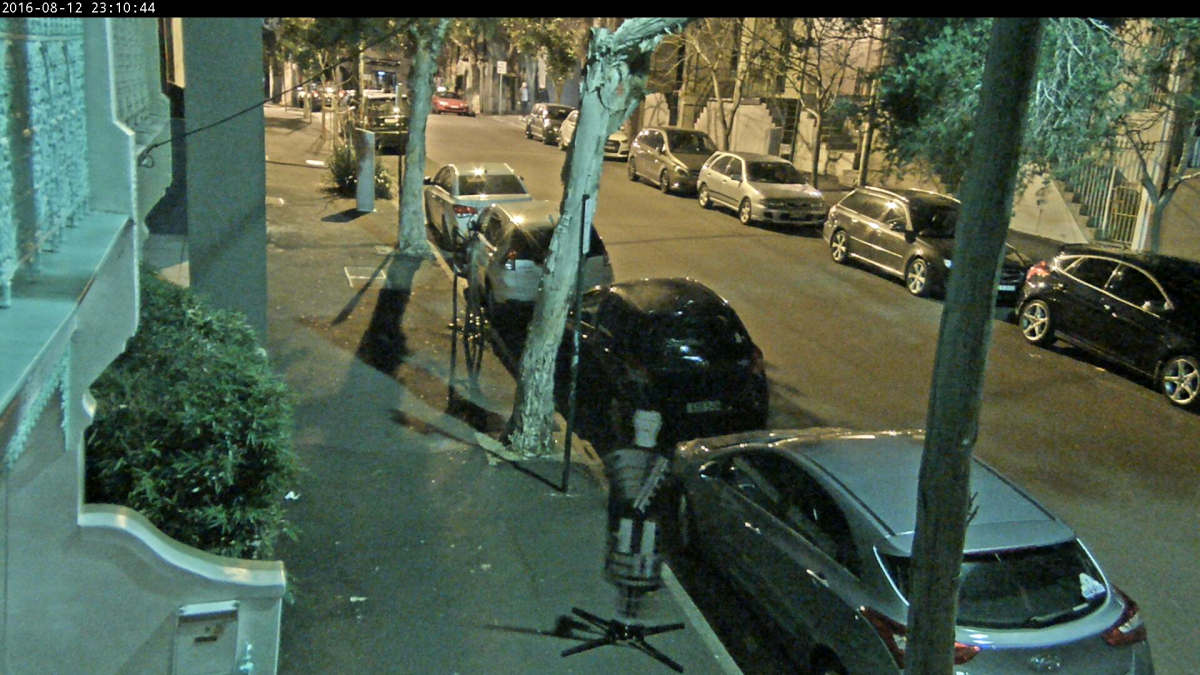
No moving plates with 7 lux at the lens but face recognition is solid, light balance is brilliant and depth of field tags along for the ride.
Next day Norman and I check out WDR performance with 72,000 lux at the rear door of the office. Typical Axis, WDR is very well handled at my default settings. There are variations in performance based on the position of the camera – best performance is at 4m from the lens – inside that the camera starts exposing for the very strong external light, impacting on foreground performance. I also get some veiling flare from the lens and a little aperture ghost appears top centre. It’s a tough application out here but it’s nothing you would not find in the real world.

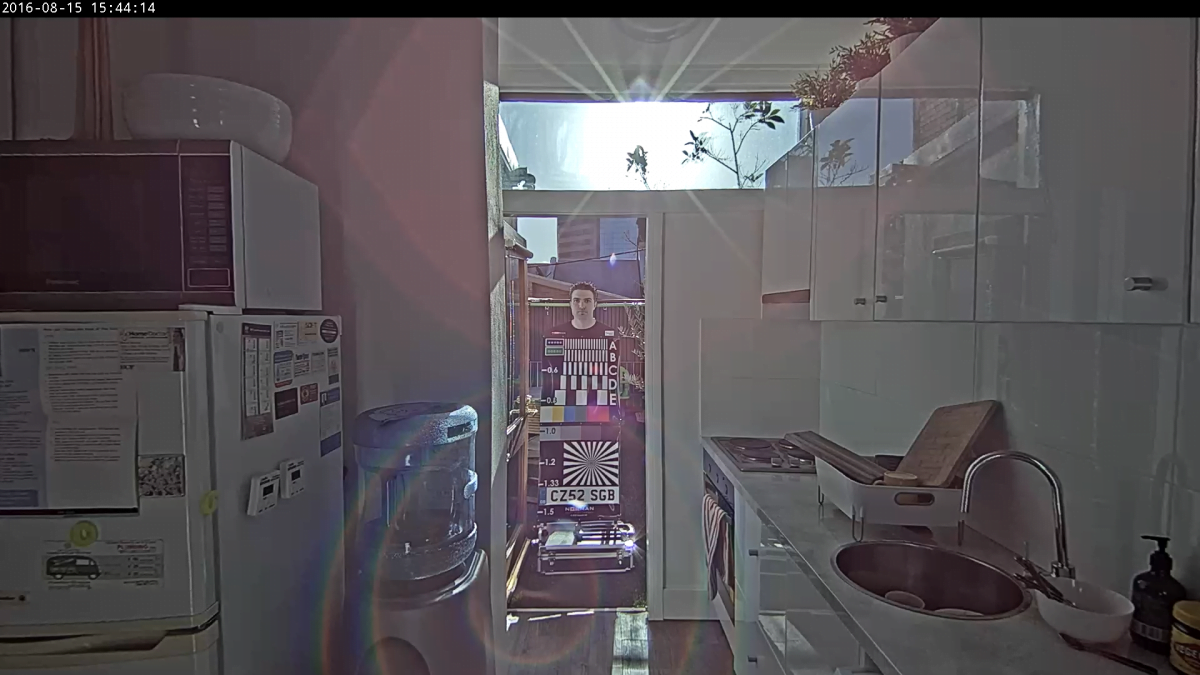
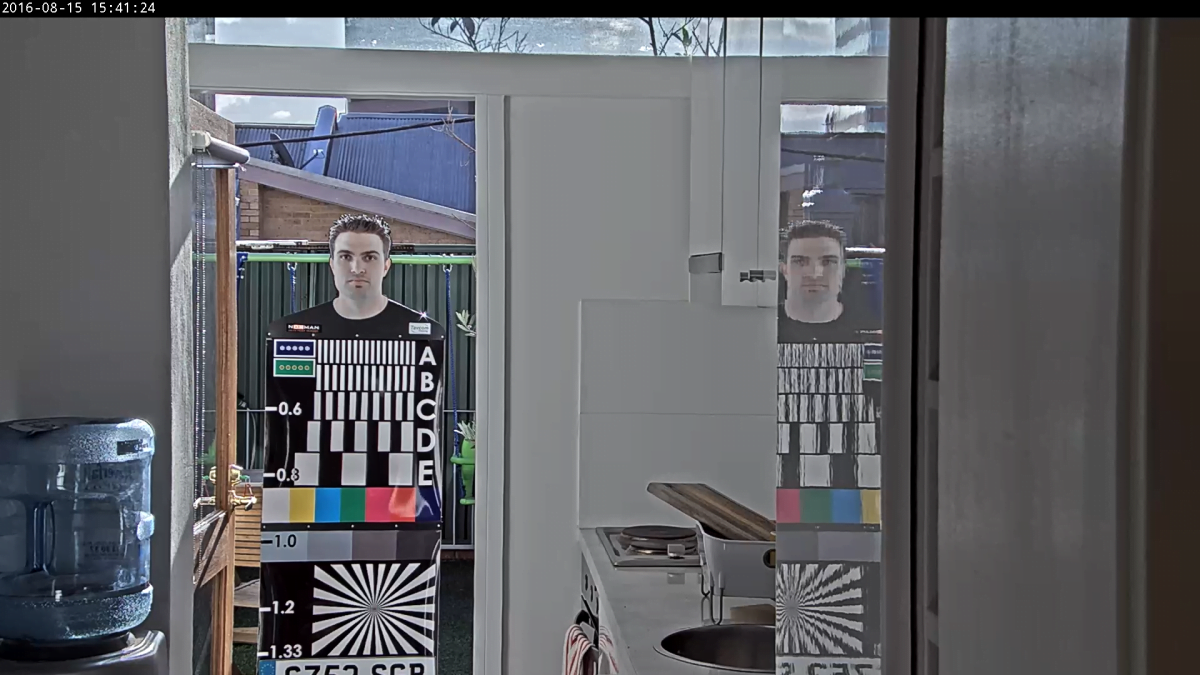
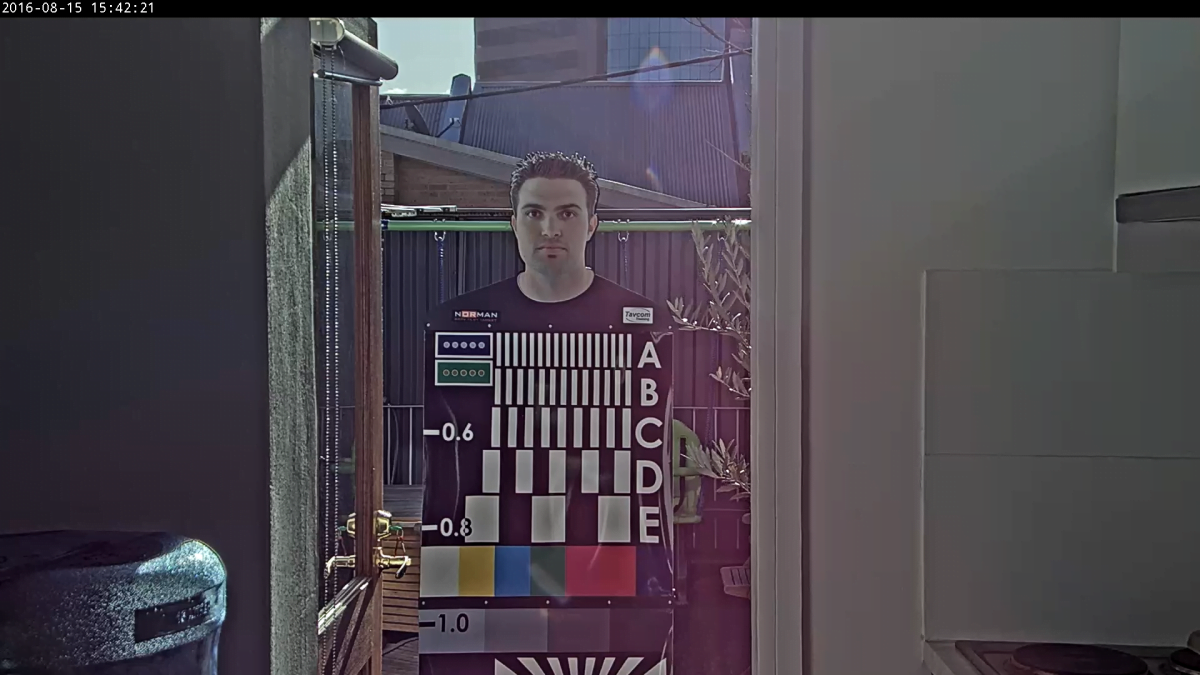
Typically good Axis WDR performance in horrible conditions – the sun is in the frame in image 2 and provoking veiling flare, internal flare and aperture ghosts in images 2 and 4. Note the complete lack of CAs in arduous conditions at about 5mm. There are many reasons to choose a mid-varifocal length…
In short, this Axis Q1615 Mark II is an excellent camera with strong performance in a range of applications from one end of the focal length to the other. With sub-2 lux at the lens it holds good colour, albeit with some noise. There are some CAs that are considerably reduced at longer focal lengths of around 5mm. The camera also does very well under 1 lux at the lens. Other strengths are that undistorted wide angle view thanks to the Computar i-CS lens and generally solid WDR performance. Since testing the Axis M1125 with a Fujinon lens recently and finding brilliant WDR performance with no flaring, ghosting or CAs, I can’t help thinking Axis cameras are more capable in strong light than most the lenses they wear and that probably applies here, too, even with this purpose build i-CS lens. ♦
By John Adams




